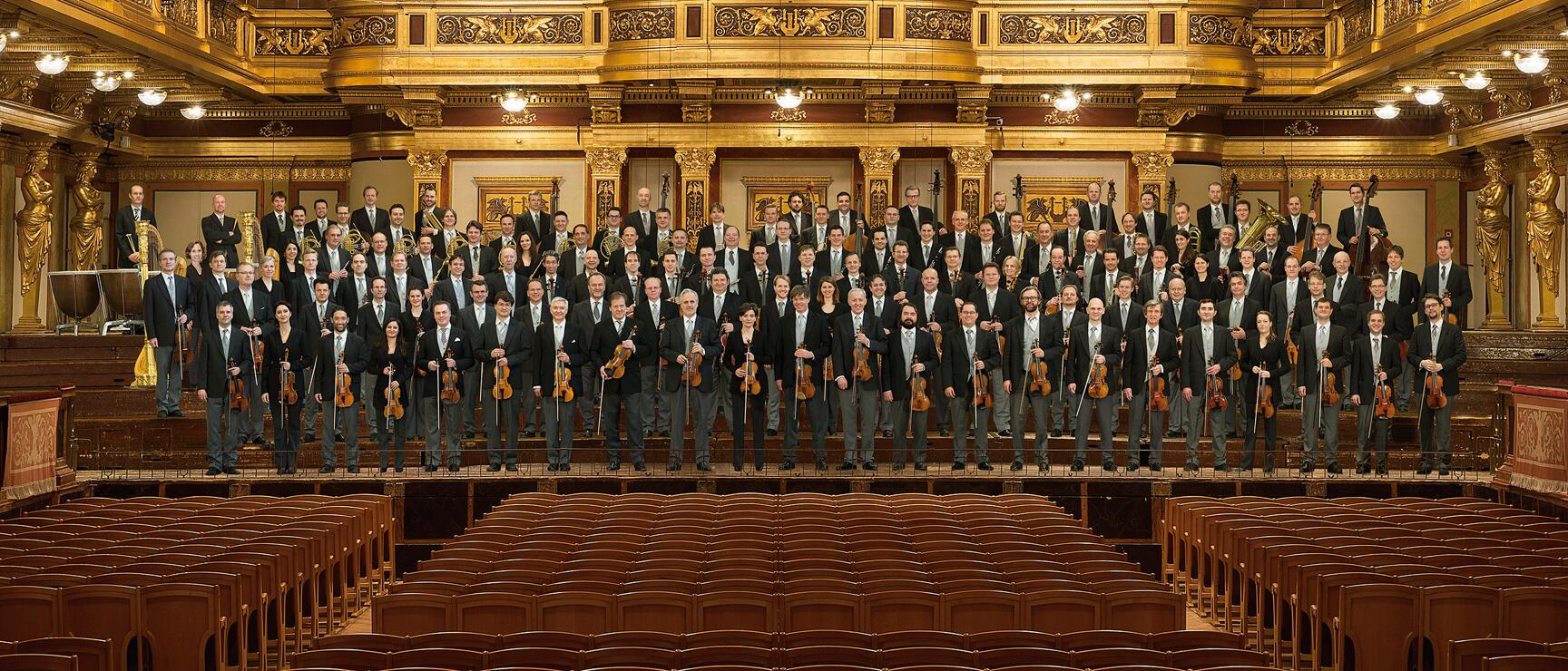
The Vienna Philharmonic Orchestra
World-famous orchestra with long-standing tradition
The Vienna Philharmonic Orchestra began in 1842 with a major performance called the "Great Concert" under the name "Philharmonic Academy." Before this, Vienna didn’t have a concert orchestra made up entirely of professional musicians, even though there was a strong interest in symphonic music. This meant a new group of musicians had to be put together for each concert. Since then, musicians for the orchestra have been selected from the Vienna State Opera’s ensemble, a tradition that remains unchanged.
Today, the Vienna Philharmonic performs both opera and concert music, delighting audiences worldwide—whether in Vienna at the Opera House or the Musikverein or on stages abroad. In the summer, they also play at outdoor events, like the Salzburg Festival, bringing music to stunning open-air venues.
Few orchestras are as connected to the history and traditions of European classical music as the Vienna Philharmonic. From its beginning, it has shaped the world of music, known especially for its unique "Viennese sound," which performers and conductors still highlight. But the Vienna Philharmonic is more than an orchestra—it’s a symbol of Vienna’s way of life.
The Vienna Philharmonic's New Year's Concert reaches a worldwide audience of over 50 million people every year and is broadcast live in more than 90 countries.
„Music and the flute have always been there.“ Karin Bonelli was born in Upper Austria’s Salzkammergut into a life filled with music. Both her parents, Bonelli’s brother, and her uncle are flautists. She first received instructions from her mother at age eight. Later she went to the conservatory in Linz to receive formal training. She also studied in Vienna, Munich and Lyon. At the young age of 23, she became the first woman to join the wind instrument section at the Vienna Philharmonic.
We wanted to know more about the young artist and what it is like to be a part of the Vienna Philharmonic and its musical legacy. What is the secret behind the magic of this venerable orchestra, and where does Karin Bonelli find the personal balance, calm and strength for her work? After the interview, she also shared which treats she cannot resist. Her reply: “Wachau apricot dumplings!”
Viennese sound style
Karin Bonelli reveals...
What is the secret behind the fascinating sound audiences can’t get enough of?
It is very likely more than the quality of the instruments, although they do play an important role as well, explains Karin Bonelli. She describes the vibrations that make up this extraordinary listening experience as a “blendable, round, warm sound.”
It has deep roots in the musical consciousness of the Viennese tradition and is passed on within the orchestra from generation to generation.
The instruments are made in the tradition of the 18th century, the Vienna Classic period. The Vienna Philharmonic regard themselves as heirs of this period’s legacy and have largely omitted the innovations of the 19th century. They remained true to the sound ideals of Mozart’s, Haydn’s and Beethoven’s times. As a result, the Viennese wind instruments, to name just one example, differ from those of other international symphony orchestras in the style of play - especially the Viennese oboe and the Vienna horn.
The Magic of Live: Where to see the Vienna Philharmonic
House of Music
Museum of the Vienna Philharmonic Orchestra
The Vienna Philharmonic Museum in the House of Music offers a captivating journey into the history of this world-famous orchestra. Opened in 2000, this interactive sound museum provides a rich view of Vienna's musical heritage and the orchestra’s deep ties to Viennese Classicism. On the second floor, visitors can explore historical documents, photos, and exhibits connected to composers like Bruckner, Brahms, and Mahler.
A highlight is the cinema room, where excerpts from the New Year and Summer Night Concerts are shown. Beyond historical displays, the House of Music also features interactive exhibits on the science of sound and the evolution of music. Visitors can even try conducting the Vienna Philharmonic virtually.
Brilliant start to the new year
The Vienna Philharmonic New Year's Concert
The New Year's Concert at Vienna's Musikverein is a treasured way for many to welcome the New Year. For the world’s leading conductors, directing this annual event is a true honour. Vienna, renowned as the city of music, is home to one of the finest orchestras globally, the Vienna Philharmonic. The "Great Hall" of the Musikverein, celebrated as Vienna's most beautiful concert hall, is also renowned for its exceptional acoustics. The concert’s grand finale, the lively Radetzky March, sees the conductor guiding the audience's clapping, creating an especially joyful atmosphere.
Due to high demand, tickets for the New Year's Concert are exclusively raffled through the Vienna Philharmonic's website, ensuring that people from around the world have a fair chance to attend. Registration for the ticket raffle is open from January to February.